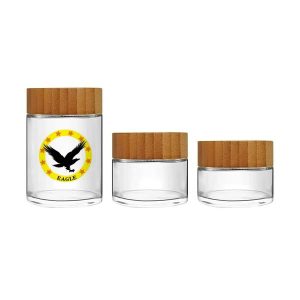Accidental ingestion of harmful substances by children is a serious concern. This article delves into the importance of child-resistant packaging, explaining what it is, why it's crucial, and the regulations surrounding it. Understanding these aspects is vital for businesses involved in packaging products that could pose a risk to young children. Read on to learn how effective child-resistant packaging safeguards children and contributes to responsible product distribution.
The Importance of Child-Resistant Packaging
What is Child-Resistant Packaging?
Child-resistant packaging is special packaging designed to significantly reduce the likelihood of children accessing potentially harmful substances. It’s not designed to be completely childproof, as no packaging can guarantee that. Instead, the goal of child-resistant packaging is to make it difficult for children under five years to open or obtain a toxic or harmful amount of the substance inside, while not being difficult for normal adults to use properly. This type of packaging plays a crucial role in safeguarding young children from accidental ingestion. Think of it as a critical barrier, providing an extra layer of protection against unintended access to household products and other potentially dangerous items.
This type of packaging often incorporates features that require a certain level of dexterity or cognitive understanding that young children typically haven't developed yet. It's about creating a deterrent that gives adults precious time to intervene and prevent a potential risk of serious injury. Ultimately, child-resistant packaging is a proactive measure, reflecting a commitment to safety and well-being.
Why is Child-Resistant Packaging So Important?
The importance of child-resistant packaging cannot be overstated. Young children, especially those under five years of age, are naturally curious and explore their environment by touching, tasting, and putting things in their mouths. This natural behavior, combined with their limited understanding of danger, makes them particularly vulnerable to accidental ingestion of household chemicals, medications, and other harmful substances. Child-resistant packaging acts as a vital defense mechanism, significantly reducing the chances of these accidental exposures.
Consider the peace of mind it offers parents and caregivers, knowing that everyday products in their homes are less likely to cause harm. Beyond the individual level, the widespread use of child-resistant packaging contributes to a significant decrease in emergency room visits and calls to poison control centers related to accidental ingestion. It's a testament to how thoughtful packaging design can directly impact public health and safety. By making it difficult for children to open potentially dangerous products, we are actively working to protect children from preventable injury or illness.
Which Products Legally Require Child-Resistant Packaging?
Several categories of products are legally mandated to have child-resistant packaging. The Poison Prevention Packaging Act (PPPA), enacted in 1970, grants the Consumer Product Safety Commission (CPSC) the authority to issue regulations requiring special packaging for household substances that pose a risk of serious injury or illness to children. These regulations are detailed in the Code of Federal Regulations, specifically title 16, part 1700.
Common examples of products that require child resistant packaging include prescription and over-the-counter medications, cleaning products (like detergents and bleach), certain automotive products (such as antifreeze and windshield washer fluid), and some art and craft supplies. More recently, with the growing legal cannabis market, many jurisdictions also require child resistant packaging for cannabis products to prevent accidental ingestion. It's crucial for manufacturers and distributors to stay informed about the specific regulatory requirements in their target markets to ensure compliance and avoid potential penalties. For instance, you'll often find specific regulations around the packaging of cannabis, requiring features that are significantly difficult for children to open but not difficult for normal adults.
What Key Features Must Child-Resistant Packaging Have?
To be considered child-resistant, packaging must meet specific criteria outlined by the CPSC. The fundamental principle is that the packaging must be constructed to be significantly difficult for children five years of age and younger to open or obtain a toxic or harmful amount of the substance contained therein within a reasonable time, but not so difficult that it is difficult for normal adults to use properly. This balance is key to ensuring both safety and usability.
Key features often involve mechanisms that require a combination of actions, such as pushing down and twisting, squeezing specific points while opening, or requiring the alignment of certain features. The packaging design should also prevent easy access through tearing or puncturing. Think of blister packs for pills, safety caps on medication bottles, or pouches that require specific cutting motions. The goal is to create a barrier that a child's limited motor skills and cognitive abilities cannot easily overcome. Furthermore, the packaging must remain child-resistant throughout its lifespan, meaning it should be able to open and close the package multiple times while maintaining its protective function.
How Does the CPSC Oversee Child-Resistant Packaging?
The Consumer Product Safety Commission (CPSC) plays a vital role in overseeing and enforcing regulations related to child-resistant packaging. The CPSC has the authority to establish crp standards and testing requirements that packaging must meet to be considered child-resistant under the PPPA. They actively monitor the marketplace and conduct testing to ensure that packaging used for regulated substances complies with these standards.
When new regulations are introduced or existing ones are updated, the CPSC provides guidance and resources to help manufacturers understand and implement the necessary changes. They also investigate complaints and reports of non-compliant packaging, taking action against companies that fail to meet the required standards. This oversight ensures that packaging regulations are consistently applied, contributing to the overall safety and well-being of children. The CPSC's work is crucial in ensuring that the promise of child-resistant packaging is a reality in the marketplace.
What Testing Procedures Do Child-Resistant Packages Need to Pass?
Before a package can be labeled as child-resistant, it must successfully pass rigorous testing procedures outlined by the CPSC. These testing procedures involve panels of children and adults attempting to open the package. Specifically, the testing typically involves two phases: a child test and an adult test.
In the child test, a group of children aged 42 to 51 months are given a demonstration on how to open the package (unless it’s a reclosable package). They are then given a specific amount of time (usually 10 minutes for the initial test and another 5 minutes after a break) to open the package. To pass, a significant percentage of the children (currently, at least 85% in the first 10 minutes and 80% in the full test) must fail to open the package. The adult test ensures that the packaging is not overly difficult for normal adults to use properly. A panel of adults, typically aged 18 to 45, must be able to open the package within 10 minutes and then open and close the package a second time within one minute. These stringent testing requirements ensure that child-resistant packaging effectively balances child safety with adult accessibility.
How Can Businesses Ensure Their Packaging is Compliant and Effective?
For businesses involved in manufacturing or packaging potentially hazardous products, ensuring compliance with child-resistant packaging regulations is paramount. The first step is to thoroughly understand the specific packaging requirements applicable to their products and target markets. This includes being aware of the PPPA and the CPSC's regulations outlined in title 16, part 1700.
Partnering with reputable packaging consultants and suppliers who have expertise in child-resistant packaging is highly recommended. They can provide guidance on selecting appropriate packaging options and navigating the testing requirements. It’s also crucial to conduct thorough testing of the chosen packaging with a CPSC-accepted testing facility to ensure it meets the necessary standards before bringing the product to market. Regularly reviewing and updating packaging designs in response to any changes in regulations or advancements in innovative packaging technologies is also a best practice. Remember, compliance is not just about avoiding penalties; it's about a commitment to consumer safety and ethical business practices. Consider exploring various child-resistant packaging for various product types to find the best solution.

What are Some Different Types of Child-Resistant Packaging Solutions?
The market offers a range of child-resistant packaging options to suit various product types and applications. For liquids, common solutions include bottles with special packaging caps that require a push-and-turn motion or squeeze-and-turn mechanisms. Unit-dose packaging, like blister packs for pills, makes it difficult for children to open multiple doses at once. For pouches and flexible packaging, child-resistant zippers or tear notches that require specific fine motor skills are often employed.
Jars can feature child-resistant features like locking mechanisms or lids that require pressing down and twisting simultaneously. Even the materials used can contribute to child resistance, with some tougher plastics being more difficult for children to puncture or tear. The key is to select a type of packaging that is appropriate for the product, meets regulatory requirements, and is still user-friendly for adults. Exploring options like the 1-18oz Child Proof Straight Sided Jar W/ CRC Cap offers insights into specific solutions. You might also consider the 1oz 2oz 3oz 4oz Dry Cannabis Flower Jar W/ Bamboo CRC Cap for its bamboo child-resistant cap.
How Does Child-Resistant Packaging Benefit Businesses in the Long Run?
While implementing child-resistant packaging might seem like an added cost, it offers significant long-term benefits for businesses. First and foremost, it demonstrates a commitment to safety and corporate responsibility, enhancing brand reputation and building consumer trust. By proactively protecting children from potential harm, companies can avoid costly lawsuits and negative publicity associated with accidental ingestion incidents.
Furthermore, complying with packaging regulations ensures market access and prevents product recalls or regulatory fines. Investing in effective packaging can also be a selling point, particularly in markets where consumers are increasingly conscious of safety features. Ultimately, child-resistant packaging plays a crucial role in building a sustainable and ethical business model. Offering high-quality, safe products, like those in our range of child-resistant glass jars, can significantly boost your market position.

Looking Ahead: What's the Future of Child-Resistant Packaging?
The field of child-resistant packaging is continuously evolving, driven by technological advancements and a growing emphasis on safety and sustainability. We can expect to see further innovations in materials and mechanisms that enhance child resistance while also improving accessibility for adults, including seniors and individuals with disabilities. There's also a growing focus on incorporating smart technologies into packaging, such as sensors or indicators that can alert caregivers if a package has been opened.
Sustainability is another key driver, with research and development focused on creating child-resistant packaging solutions that are also recyclable or biodegradable. The future of child-resistant packaging will likely involve a combination of sophisticated design, advanced materials, and smart technology, all working together to create even more effective and user-friendly solutions for secure packaging. This includes exploring innovative packaging that seamlessly integrates safety and environmental considerations.
Key Takeaways:
- Child-resistant packaging is designed to significantly reduce the risk of accidental ingestion by children.
- Regulations like the PPPA, enforced by the CPSC, mandate child-resistant packaging for many household substances and cannabis products.
- Effective child-resistant packaging must be difficult for children under five years of age to open but not difficult for normal adults to use properly.
- Rigorous testing procedures ensure that packaging meets the required standards.
- Investing in compliant and effective packaging benefits businesses by enhancing reputation, avoiding liabilities, and ensuring market access.
- The future of child-resistant packaging will likely involve advanced materials, smart technologies, and a focus on sustainability.
Remember, while child-resistant packaging provides a critical layer of protection, it is not a substitute for responsible storage and adult supervision. Always keep potentially harmful substances out of reach of children, even when they are in child-resistant packaging. It's also important to note that some packaging may include the statement "package not child resistant" for package for households without young children.
Post time: 01-04-2025







